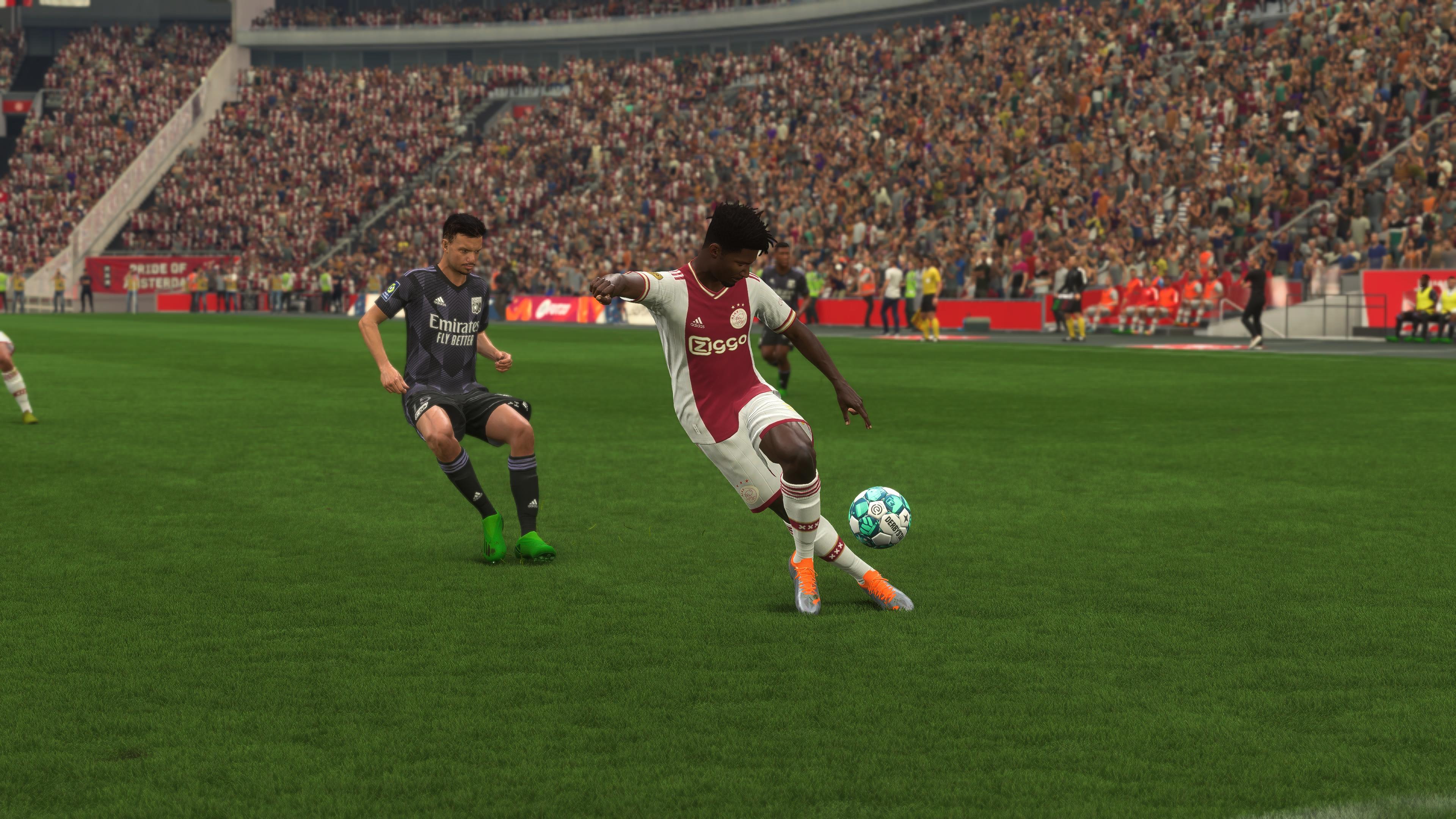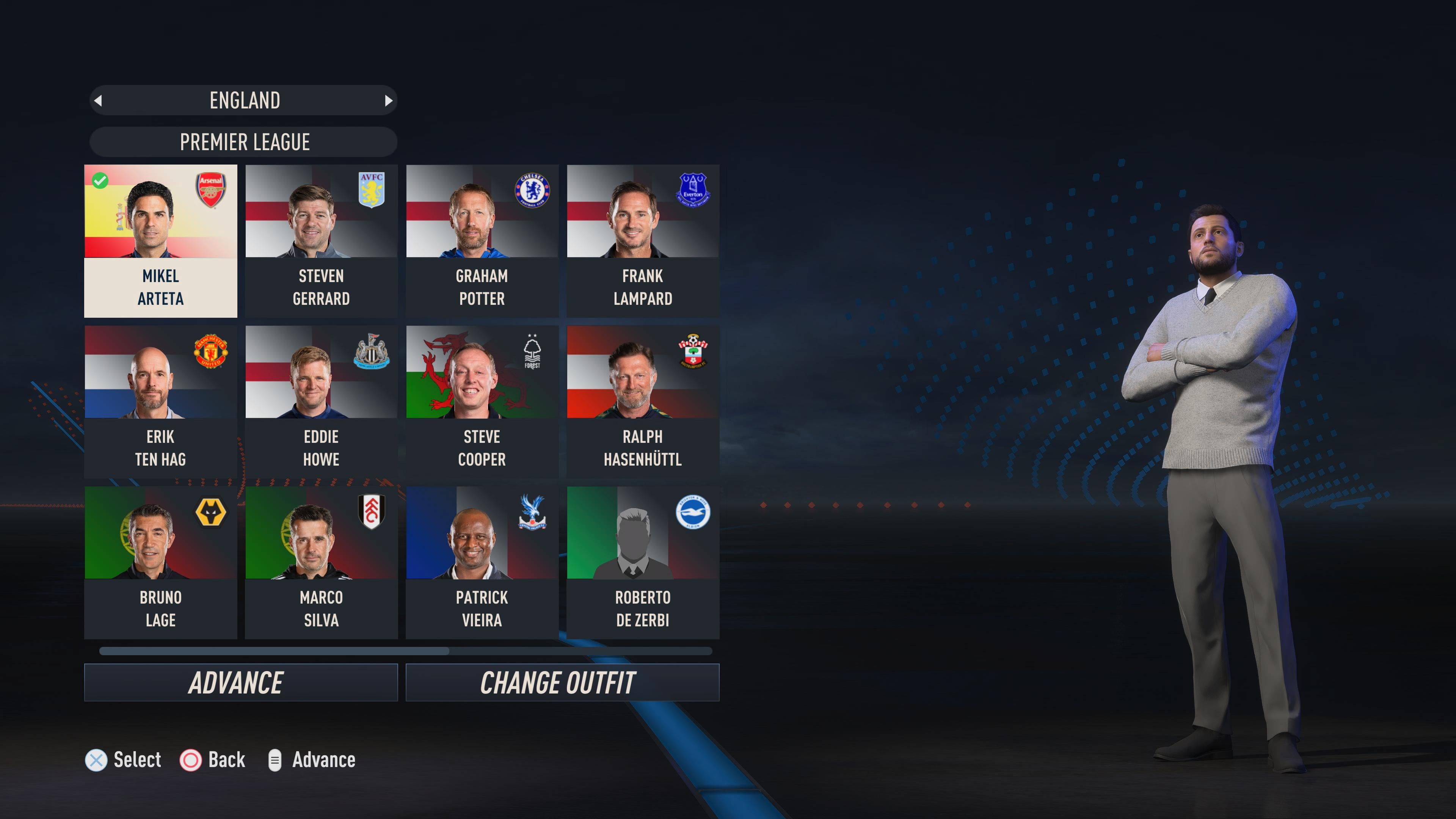FIFA 23 takes another crack at the impossible balancing act that presents itself to EA Sports every 12 months, with accessible, realistic football simulation on one side and intense gameplay with an extreme skill gap on the other. So while FIFA 23 is yet another utterly compelling dopamine factory that I’ll no-doubt be playing until the day before the next game comes out like every year, it’s still very easy to criticise and will ultimately be as divisive as previous entries over the last 5-ish years have become. FIFA 23 is all about lightning-fast, arcadey, white-knuckle gameplay, with brief, intense matches. One of the back-of-the-box incremental improvements in FIFA 23 is what they’re calling Hypermotion 2, which uses motion-capture and machine-learning to create more realistic animations as you play. It’s a win for the realism side of the balancing act and looks great in general, eliminating some of the jarring, immersion-breaking (and reality-defying) contortion that was liable to pop up over hundreds and thousands of matches, just as EA Sports said it would. However, the elephant in the room is that the gameplay is way too fast to ever look truly realistic. The much-hated “skating” look as players seem to glide from stride to stride is greatly reduced in attacking, where striking the ball is more intuitive and feels silkier, but on defence jockeying players gallop, full-Gangnam Style, and it’s all very slippery. It’s a textbook example of EA’s duelling ideologies when it comes to FIFA, where it doesn’t really matter if the animations are pulled from genuine movements if it looks like they’re performed in bullet-time from The Matrix. This doesn’t mean that the running is all bad, though. Another of the main additions to FIFA 23 is acceleRATE explosive, controlled, and lengthy sprint acceleration styles – which is a great idea in theory that in practice leads to some really surprising and authentic moments too. Playing against tricky players like Raheem Sterling and seeing him wriggle away on the edge of the box to bear down on goal – with his trademark run in the game too – so similarly as he’s done for England, Man City, and now Chelsea over the years can’t help but bring a smile to your face. However, in other areas the balancing act reappears, as the difficult task of making the system powerful and visible in-game, but not massively overpowered rears. Some explosive players suddenly feel as if they’re running through molasses and lumbering guys build up unassailable heads of steam. The speed of players also feels like it’s condensed a lot in FIFA 23, which I actually agree with as a change. When you watch real football, absolute mismatches in terms of speed are relatively rare and very context dependent, but when you put a binary number on things like pace even players that are the most dedicated to realism are going to throwing their hands up as their rapid attacker is tractor-beamed in by a slower defender. Nowhere is the dissonance between fantasy and realism stronger than in Career Mode. Another of EA Sports’ impossible tasks is that diehard players simply get too good at the game with hundreds of hours of practice, so every clogging AI winger needs to dribble like prime Maradona or you win every game 7-0. Pumping things up to a competitive level then turns every match into a tit-for-tat ding-dong, which again breaks the delicate suspension of disbelief that Plymouth Argyle really are scrapping for the Champions League, or whatever headcanon you’re RPing (because that’s what you’re doing even if there are no fairies and wizards involved, folks). It doesn’t help that Career Mode feels underloved compared to the esteem its dedicated player base holds it in. There are new cutscenes, ratings for transfers, and a revamped presentation style, but they’re ultimately superfluous to gameplay. What makes it feel truly sidelined though is the presence of apparent bugs which spoil the match experience. One I’ve gotten across multiple saves since release is substituted players getting a terrible match rating regardless of how well they played, with stuff like a two-goal performance yielding a score of 4.0 out of 10. Not only does this impact their overall growth and progression - scouting the best wonderkids and growing them into overpowered superstars is the whole point of the game mode - but it seeps into the presentation parts of the game too. You start to get questions in press conferences about your free-scoring players falling out of form (they haven’t), as well news stories lamenting their poor performances (which didn’t happen), and it quickly snowballs into an unsatisfying experience. It’s surprising that things like this weren’t ironed out before launch and it’s easy to read into it as an indication that Career Mode is under-resourced. That’s also surely the only explanation for the new “play as a real manager” option being in the state it’s in, too. Customisable managers have been a thing for a few years now, and in FIFA 23 you can take one of the face-scanned managers like Jurgen Klopp to a new club or play as him in charge of Liverpool rather than turfing him out for your create-a-manager like in previous games. However, FIFA 23 has more manager licences than scans, meaning you can play as some ‘real managers’ who’re cobbled together from the character creator. While you could argue it’s a minor feature, it was one that was touted as a showpiece addition to FIFA 23’s Career Mode, but it’s very hard to argue that this representation of “Mikel Arteta” is up to the quality of a triple-A game that made hundreds of millions in profit last year. Much has been made of FIFA 23 being the last game in the FIFA series, with EA cutting ties with the world football governing body to pursue licensing relationships on their own. Some questions have been raised about the tempting prospect of holding things back to start EA Sports FC with a bang, and you have to wonder if one of those possible things is an overhaul of non-face scanned players, managers and characters. Even some of the seemingly older scans are starting to stick out - Oliver Giroud’s quiff is so huge he looks like he’s wearing a Marie Antoinette wig. Contrastingly, Ultimate Team is even more vibrant and engaging than ever, further refining the live-service tricks EA has learned from gaming’s most popular battle passes, weekly challenges and other hooks. The barrier to playing with top players and special cards is pretty much gone, with tons of friendly game modes that let you use loan players and icons in perpetuity, single-player objectives that give you packs, special cards and loads of coins, as well as more flexible team-building and less player upkeep. Lower-stakes game modes make things less temple-burstingly fervid, but the inconsistencies that lead to open matches still make you shake your head with despair, before you inevitably jump back into another wide-eyed clash where you can almost feel the melanin seeping from your greying hair from stress. The compelling intensity can’t help but make me think of all the stories of people overplaying and overspending on player packs. Although some lip-service is paid to making people break up their purchases by requiring different button inputs in the store, you have to think if there isn’t a genuinely addictive element to it, why does it need these checks and balances? But keeping things on the pitch, FIFA 23 is still utterly engrossing, wildly frustrating, uncannily realistic and very silly. It’s endlessly playable but, just like real football, the search for the perfect blueprint goes on. Tested on PS5, Ultimate Edition code (which included 4600 FIFA Points) provided by the publisher.

